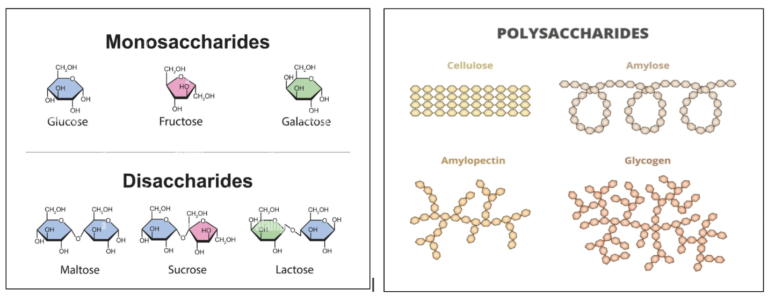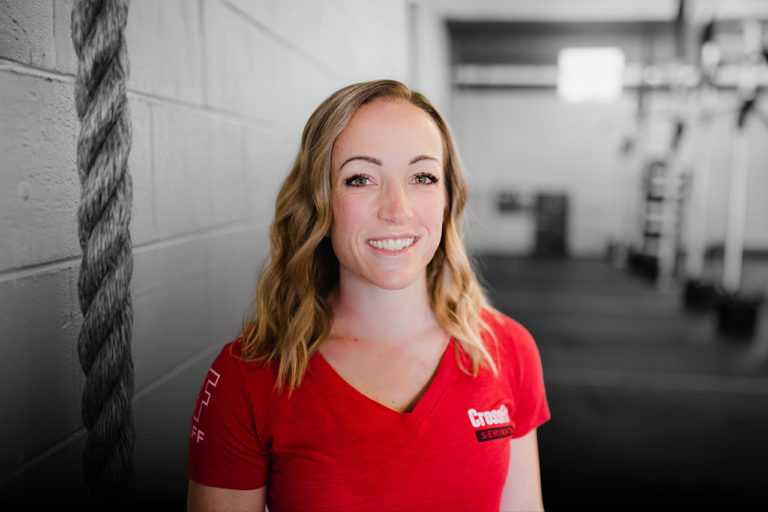In the first post in this series, we discussed calories; in the second, we discussed protein. Next up are carbohydrates.
Carbohydrates are molecules made of carbon, hydrogen, and oxygen atoms that serve as the body’s primary and preferred source of energy. They’re categorized based on how many sugar units they contain. Sugars are things that end in -ose — glucose, fructose, lactose, maltose, etc. All dietary carbohydrates are either free sugars or groups of sugars stuck together.
They can be monosaccharides (one free sugar molecule):
- Glucose
- Fructose
- Galactose
They can be disaccharides (two sugars bound together):
- Sucrose (glucose + fructose)
- Lactose (glucose + galactose)
- Maltose (glucose + glucose)
Or they can be Polysaccharides — many sugars bound together in a variety of structures and shapes:
- Starch (from plants)
- Amylose (linear)
- Amylopectin (branched)
- Cellulose (also from plants, but indigestible by humans)
- Glycogen (from animals, including humans)

Your body makes specific enzymes (like sucrase, lactase, amylase, and maltase) to break down disaccharides and polysaccharides into individual sugars. If you don’t make enough of these enzymes (like lactase), digestion problems ensue (hello, lactose intolerance).
Simple carbs (monoaccharides and disaccharides) are quickly digested and absorbed.
Complex carbs (polysaccharides) take longer to digest and often come with fiber and micronutrients.
Fiber is a catch-all term for any type of carbohydrate structure the human body cannot break down. Fiber resists digestion in the human gastrointestinal tract because we lack the necessary enzymes to break its specific glycosidic bonds.
All digestible carbohydrates are ultimately broken down into their most straightforward sugar units and absorbed into the bloodstream. Most of these are converted into glucose, the most readily available fuel to make energy in the body. Every cell in your body can use glucose; specific cells, like red blood cells and a subset of brain cells, must have glucose to function.

To meet the needs of cells that require it, your bloodstream contains about 4 grams of glucose at any given moment — just one teaspoon. That’s a shockingly small amount compared to what most people consume in a single meal or snack. This level is tightly regulated between meals, workouts, and even while sleeping. If glucose levels rise too much (8-12 grams in the blood) or dip too low (2 grams), things go sideways fast.
Fructose, however (found in fruit and added sweeteners like sugar and high-fructose corn syrup), is absorbed through a different pathway and metabolized primarily in the liver. Unlike glucose, fructose cannot be directly used by most cells in the body. Instead, the liver converts fructose into other forms, often fat, via de novo lipogenesis (meaning: “making new fat”).
While small amounts of fructose from whole foods are not problematic, large quantities from added sugars in the standard Western-style Ultra-Processed Food diet contribute to liver fat accumulation and metabolic dysfunction over time.
Unlike protein (which provides essential amino acids) and fat (which provides essential fatty acids), there are no essential carbohydrates. Even though glucose in the bloodstream is necessary to sustain life, surprisingly, no deficiency disease is associated with a lack of carbohydrates in the diet. While you will die without consuming essential amino acids and essential fatty acids, you will not die without consuming carbohydrates. This is because the body can make glucose from non-carbohydrate sources through gluconeogenesis (meaning “making new glucose”). To ensure we are never without the glucose we need, the body can make it from multiple sources, including lactate, certain amino acids found in protein, and glycerol from the breakdown of fat. Fat is what we’ll discuss next time.
About the Author
 Jocelyn Rylee (CF-L4) and her husband David founded CrossFit BRIO in 2008, starting in a modest 1500 sq ft space and focusing on personal training. Her dedication to excellence has also earned her a position on CrossFit LLC’s Level 1 Seminar Staff, a role that allows her to share her passion and expertise with aspiring coaches. Jocelyn holds specialties in Endurance, Gymnastics, Competition, and Weightlifting and is also a certified Strength and Conditioning Specialist through the NSCA. As a Level 2 Olympic Weightlifting Coach and a Level 3 referee, she has been deeply involved in the sport, even serving as a board member of the Saskatchewan Weightlifting Association for five years. Her achievements include being Saskatchewan’s top-ranked female Olympic Weightlifter from 2012 to 2015, during which she held provincial records in the Snatch, Clean & Jerk, and Total in her weight class. With an MS in Human Nutrition, Jocelyn loves sharing her knowledge on nutrition and performance through her blog and Instagram as “The Keto Athlete,” where she delves into the science of nutrition and its impact on athletic performance.
Jocelyn Rylee (CF-L4) and her husband David founded CrossFit BRIO in 2008, starting in a modest 1500 sq ft space and focusing on personal training. Her dedication to excellence has also earned her a position on CrossFit LLC’s Level 1 Seminar Staff, a role that allows her to share her passion and expertise with aspiring coaches. Jocelyn holds specialties in Endurance, Gymnastics, Competition, and Weightlifting and is also a certified Strength and Conditioning Specialist through the NSCA. As a Level 2 Olympic Weightlifting Coach and a Level 3 referee, she has been deeply involved in the sport, even serving as a board member of the Saskatchewan Weightlifting Association for five years. Her achievements include being Saskatchewan’s top-ranked female Olympic Weightlifter from 2012 to 2015, during which she held provincial records in the Snatch, Clean & Jerk, and Total in her weight class. With an MS in Human Nutrition, Jocelyn loves sharing her knowledge on nutrition and performance through her blog and Instagram as “The Keto Athlete,” where she delves into the science of nutrition and its impact on athletic performance.